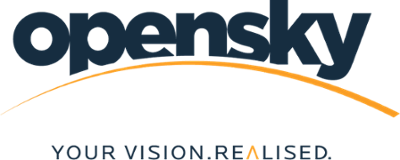6 things to consider when creating a business case
A Business Case for an IT investment outlines the business problem, examining the potential benefits, costs and risks. It details potential approaches to addressing the problem and will determine the impact a new system will have on a company’s profitability, and also the financial changes that may happen after the system is implemented. The business case not only outlines the problem statement (& reasons) but will additionally describe opportunities that the business case is solving. It further describes the impact of the problem and the timeframe for resolution. A business case is vital to gain approval from board members or senior staff and it is a time-consuming yet thoroughly productive task - here are 6 things to consider when creating a business case.
- Description of the Business Problem:
There are many factors which can lead an organisation to consider platform modernisation, such as:
- For Government bodies, the introduction of new legislation and the requirement for systems to accommodate these requirements can be a driver for change.
- Published accounts are key for monitoring performance and demonstrating accountability. Many legacy systems lack the required reporting capabilities and adequate access to system data.
- The public and private sectors are curators for large volumes of data which is in many cases sensitive and the security of this data is paramount. The adoption of cloud-based IT systems can reduce security risks with strong security safeguards and encryption.
- There is a higher level of expectation from the public in relation to how transactions including a seamless service such as online transactions and portal access to their information, negating the need for paper forms, automating data entry and generally providing the customer with a more satisfying experience.
- Skills shortages for legacy system which may require specific IT skills. Legacy systems often incorporate extensive customisation with dependencies existing on certain employees. This is not sustainable in the long term.
- Legacy systems can be costly to maintain due to the heavy amount of customisation. The high levels of customisation can act as a barrier to additional functionality required for changing business needs.
- Expected Benefits
Potential benefits that should be considered:
- Business Growth: improved infrastructures that support system extensions, support of emerging technologies, leveraging application functionality and making available as an API
- Reducing costs through removing manual process and driving towards portal usage
- Improved decision making and efficiency: Business Intelligence and reporting, ease of customisation, and minimised downtime
- Better Collaboration: Increased Customer Satisfaction and engagement through the provision of easy to use systems
- Enhanced security to protect data
- Compliance with legislation and regulations
- Cost Estimates:
To determine if a project is cost-effective and worth proceeding with, there is a requirement to have a cost estimate.
Typical project costs to consider:
- Acquisition
- Cost of expanding the solution
- Implementation costs
- Customisation and configuration costs
- Support and administration costs (include training)
- System requirements costs
- Risks and Issues
Risk assessment is an ongoing process that can be developed and expanded through time. It can help to bring together different stakeholders and, because risk management is understood by senior management it can also help to make the case for investment. When the organisation is assessing which modernisation approach to take, the risks need to be determined and assessed across the following risk groupings:
- Operational risks - This group includes the risks around low user adoption and low reliability of operations. Additional operational risks can arise from poor implementation, process problems around procurement, or delays in decision making etc.
- IT risks - A general set of risks includes short shelf life, lack of operational functionality, and incompliance with technology requirements. Mitigate these risks with a system that combines comprehensive functionality and is configurable and adaptable to changing requirements.
- Financial risks - The major financial risk is the expensiveness and incompliance of a selected IT solution with initial budget. Additionally, the solution may require expensive modules, extensions or customisations.
Once these have been determined and assessed for each of the possible approaches, a comparison matrix will expose the contrasts and provide for a visualisation of the findings.
- Outline of Alternatives considered alongside the Preferred Solution
Taking the potential benefits, costs and associated risks of each solution across the modernisation approaches, the organisation can determine in which direction to proceed. The original business problem will be the determining factor in this.
- For example, the case of an outdated legacy system with dwindling availability of applicable skill sets, it should be determined if that ‘tipping point’ is imminent. If not, the organisation may elect to postpone resolving the business problem and “Do Nothing” at this point, accepting the associated risks.
- However, it may be determined after assessment that the best option for the organisation facing this problem is to eliminate the former application component altogether and replace it, taking new requirements and needs into account. (Big Bang)
- As total platform modernisation is not the only option and smaller scale modernisation may work as a possible interim solution. A rehost to cloud infrastructure, for example, may address such issues as weak security (Phased Platform Modernisation).
- Calculate Return on Investment:
As a final step in the business case development, it is important to measure the ROI of the investment project. Return on Investment measures the gain (or loss) generated on an investment relative to the amount invested. It is a key indicator of the profitability of the proposed solution. The commonly used formula is: ROI = [(Payback – Investment)/Investment)]*100
Showing the Business Value of a Project
Upon creating the business case, it will uncover the current state of legacy systems, current and potential issues, future business plans and growth opportunities so organisations will be in a better position to select the modernisation approach which best fits its needs. While the business value of a project may seem, obvious to you there are key stakeholders to convince so a well-thought out and strong business case will increase the chances of stakeholder approval and future success.



